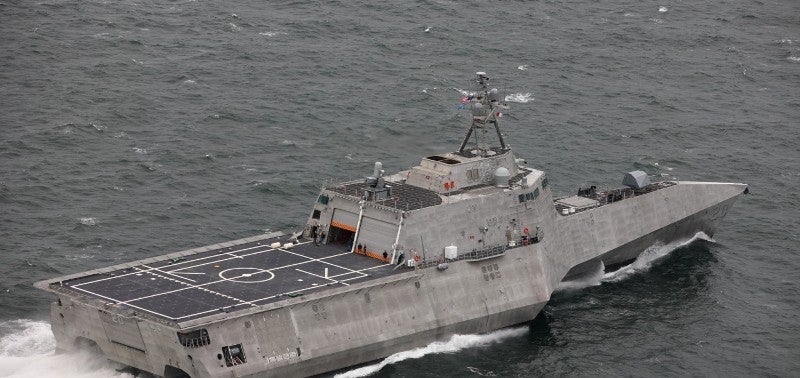
Austal USA has delivered the future USS Cincinnati littoral combat ship (LCS) to the US Navy during a ceremony at the facility in Mobile, Alabama.
Designed LCS 20, the future USS Cincinnati is the 18th LCS vessel to be delivered to the navy and the tenth Independence-class ship to enter the fleet.
The official handover of the ship comes ahead of its planned commissioning during this autumn in Gulfport, Mississippi.
LCS programme manager captain Mike Taylor said: “This is a great day for the navy and our country with the delivery of the future USS Cincinnati.
“I look forward to celebrating the commissioning of this great ship alongside the crew later this year. This ship will play an essential role in carrying out our nation’s maritime strategy.”
Before delivery, LCS 20 successfully completed acceptance trials in the Gulf of Mexico. The ship underwent testing to demonstrate the performance of the propulsion plant, ship-handling, and auxiliary systems.
Austal will also perform post-delivery availability work on LCS 20 under a contract secured earlier this year.
The company is currently building five more Independence-variant LCS ships for the Navy at its Mobile facility.
Delivery of the future USS Kansas City (LCS 22) is expected to take place this autumn. The remaining four ships, the future USS Oakland (LCS 24), Mobile (LCS 26), Savannah (LCS 28) and Canberra (LCS 30), are in various stages of construction.
The navy has plans to acquire four additional ships.
LCS is a fast, agile, mission-focused platform that can deal with threats such as submarines, mines and swarming small craft.
The vessel has the ability to operate in both near-shore environments and open-ocean.
They can be deployed in support of forward presence, maritime security, sea control, and deterrence.



